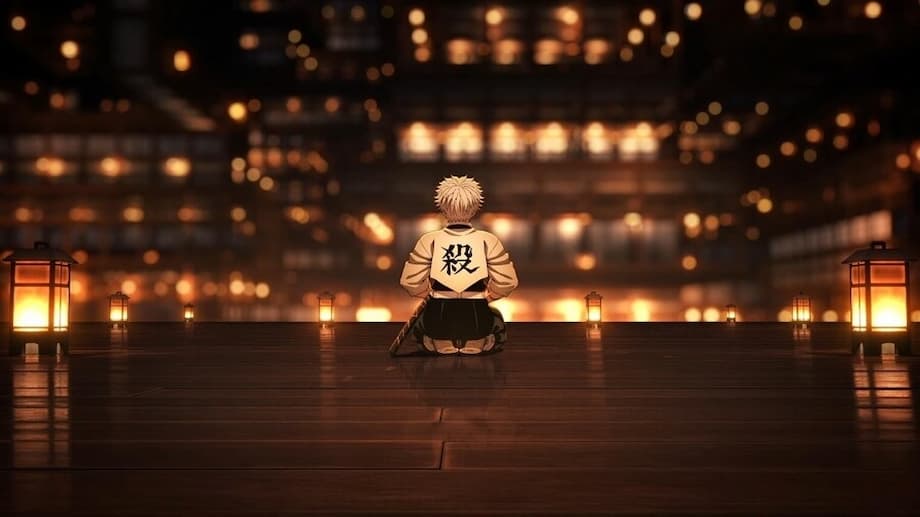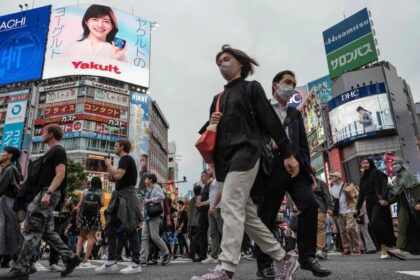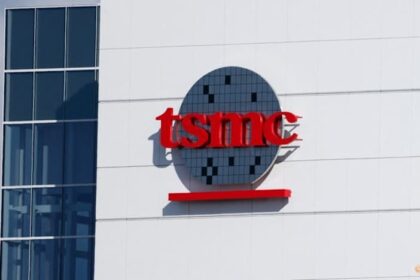Demon Slayer’s Phenomenal Success in South Korea
Japanese anime has long enjoyed a devoted following in South Korea, but few titles have ignited the kind of fervor seen with the Demon Slayer franchise. The latest film, Demon Slayer: Infinity Castle, is not just a box office hit—it is poised to become Korea’s biggest cinematic success of the year, outpacing both local and international competitors. This remarkable achievement comes despite historical controversies and ongoing political tensions between Japan and South Korea, raising the question: Why is Demon Slayer so popular among Korean audiences?
- Demon Slayer’s Phenomenal Success in South Korea
- Box Office Records: A New Benchmark for Anime in Korea
- Cultural Ties: The Deep Roots of Anime in Korea
- Storytelling That Resonates: Family, Sacrifice, and the Supernatural
- Merchandise, Events, and Fandom: The Business of Demon Slayer in Korea
- Controversies and Political Tensions: Art Versus Politics
- The Broader Context: Anime’s Rise in Korea and Beyond
- In Summary
The answer lies in a blend of cultural affinity, storytelling resonance, and the unique position of anime in the Korean entertainment landscape. By examining box office data, cultural trends, and expert analysis, we can understand how Demon Slayer has become a phenomenon in South Korea.
Box Office Records: A New Benchmark for Anime in Korea
When Demon Slayer: Infinity Castle premiered in South Korea, it shattered expectations. Within just five days, the film surpassed 2 million admissions, making it the fastest-growing release of 2025 in the country. It quickly overtook previous box office leaders, including the local hit Zombie Daughter, and set a new first-day admissions record with 540,000 viewers. According to the Korea Box-office Information System, the film commanded over 68% of all tickets sold during its opening weekend, a staggering figure in a competitive market.
Globally, Demon Slayer films have been consistent box office draws, but Korea stands out as one of the franchise’s largest markets outside Japan. As of the latest figures, Japan leads with $191.1 million in gross for Infinity Castle, followed by Korea at $12.9 million and Taiwan at $9.8 million. Notably, Korea’s strong performance is even more impressive given that the film opened later there than in Japan and Taiwan, yet still surged ahead of other international markets.
These numbers are not an anomaly. The previous film, Demon Slayer: Mugen Train, became the fifth-highest-grossing Japanese animated feature in Korea, selling over 2.22 million tickets. The franchise’s momentum has only grown, with each new release drawing larger crowds and more attention from both fans and the media.
Cultural Ties: The Deep Roots of Anime in Korea
To understand Demon Slayer’s popularity, it’s essential to look at the long-standing cultural relationship between Japan and Korea in the realm of animation. For decades, Korean audiences have been exposed to Japanese anime, both through television broadcasts and the influence of Japanese animation on local productions. This shared history has created a strong foundation for Japanese anime to thrive in Korea, even as political tensions occasionally flare.
While Hollywood has largely shifted to 3D animation, Japan remains committed to the traditional 2D style. This aligns closely with Korean audience preferences, as many grew up watching 2D animated shows and continue to favor this aesthetic. The visual style of Demon Slayer, with its lush hand-drawn animation and dynamic action sequences, resonates deeply with Korean viewers who appreciate the artistry and nostalgia of 2D animation.
According to industry analysts, this cultural affinity is a key factor in the franchise’s enduring appeal. As one expert explained,
“Korean animated works have historically been influenced by Japanese animation, and this influence persists today. The familiarity and quality of Japanese anime make it a natural fit for Korean audiences.”
Storytelling That Resonates: Family, Sacrifice, and the Supernatural
Beyond its visual appeal, Demon Slayer’s storytelling strikes a chord with Korean viewers. The series centers on themes of family bonds, sacrifice, and the struggle between good and evil—universal concepts that are particularly meaningful in Korean culture. The protagonist, Tanjiro Kamado, embarks on a quest to save his demonized sister, Nezuko, a narrative that highlights the importance of familial loyalty and perseverance in the face of adversity.
Additionally, the series incorporates elements of the “zombie narrative,” a genre that has proven immensely popular in Korea through both local films and television dramas. The idea of humans battling supernatural threats, often at great personal cost, mirrors the themes found in Korean hits like Train to Busan and Kingdom. Demon Slayer’s blend of action, horror, and emotional depth offers a familiar yet fresh experience for Korean audiences.
The film’s climactic battles, intricate world-building, and emotionally charged backstories provide a rollercoaster of adrenaline and empathy. The Infinity Castle itself—a sprawling, ever-shifting fortress filled with demons—evokes the surreal spaces of blockbuster films, drawing comparisons to the works of directors like Christopher Nolan. Combined with a powerful soundtrack and cutting-edge animation, the movie delivers a cinematic experience that appeals to both casual viewers and dedicated fans.
Merchandise, Events, and Fandom: The Business of Demon Slayer in Korea
The popularity of Demon Slayer extends far beyond the movie theater. Korean theater chains have capitalized on the hype by offering exclusive merchandise, such as signature art cards, character-themed popcorn buckets, reusable cups, and collectible key rings. These items often sell out quickly, fueling a sense of excitement and exclusivity among fans.
Major events further amplify the franchise’s visibility. A red-carpet extravaganza is scheduled in Seoul, featuring Japanese voice actors and popular K-pop artists, including the girl group Fifty Fifty and singer Soyou. Such events draw large crowds and generate significant media coverage, reinforcing the franchise’s status as a cultural phenomenon.
Streaming platforms have also played a crucial role in expanding the franchise’s reach. Korean fans can access Demon Slayer’s TV series and films online, making it easier than ever to follow the story and engage with the community. Social media buzz, fan art, and cosplay are ubiquitous, with Demon Slayer characters frequently appearing at conventions and cultural festivals.
At a recent Japanese-South Korean cultural festival in Seoul, which drew over 65,000 attendees, several fans dressed as Demon Slayer characters. One 25-year-old attendee explained,
“I came here for the first time this year because I like Japanese anime and food. There are lots of things to see, and it’s interesting.”
Such testimonials highlight the franchise’s broad appeal and its role in fostering cross-cultural exchange.
Controversies and Political Tensions: Art Versus Politics
Demon Slayer’s success in Korea is all the more remarkable given the historical and political challenges it has faced. The anime’s setting in the Taisho Era—a period that overlaps with Japan’s colonial rule over Korea—has sparked criticism from some quarters. The protagonist’s earrings, which resemble the Rising Sun Flag (a symbol associated with Japanese imperialism), have been particularly controversial. In response, the earrings were edited for the Korean release to avoid offending local sensitivities.
Despite these issues, the franchise’s popularity has not waned. Surveys show that while many Koreans have participated in boycotts of Japanese products due to trade disputes and historical grievances, they often make exceptions for cultural works like anime and manga. The core audience for Demon Slayer—primarily teenagers and people in their 20s—tends to separate art from politics, focusing instead on the quality of the storytelling and animation.
As one college student in Seoul put it after watching Demon Slayer: Mugen Train,
“I questioned whether it was right to reject all things Japanese. I’m not a traitor for enjoying the culture.”
This sentiment is echoed by many young Koreans, who see cultural exchange as a way to appreciate artistry without endorsing historical injustices.
The Broader Context: Anime’s Rise in Korea and Beyond
Demon Slayer’s triumph is part of a larger trend: the growing influence of anime in Korea and around the world. Once overshadowed by K-pop and Korean dramas, anime has now become a leading force in global entertainment. Streaming giants like Netflix and Amazon are investing heavily in anime content, while companies such as Sony have established themselves as dominant players in anime distribution.
Anime’s accessibility, diverse genres, and relatively low production costs make it an attractive investment for both creators and distributors. In Korea, anime’s popularity is evident not just in box office numbers but also in the vibrant online communities, fan art, and merchandise sales that surround major releases. Titles like One Piece, Naruto, and Dragon Ball have long enjoyed mainstream success, but newer franchises like Demon Slayer, Jujutsu Kaisen, and Chainsaw Man are capturing the imagination of a new generation.
This cultural exchange is not one-sided. Just as Japanese anime finds a receptive audience in Korea, Korean dramas and music have made significant inroads in Japan and beyond. Events like the Japanese-South Korean cultural festival in Seoul, which features performances by K-pop groups and Japanese artists, underscore the mutual fascination and respect between the two countries’ entertainment industries.
In Summary
- Demon Slayer: Infinity Castle is breaking box office records in South Korea, becoming the fastest-growing release of 2025 and outpacing both local and international competitors.
- The franchise’s success is rooted in deep cultural ties between Japan and Korea, particularly in animation, and a shared appreciation for 2D anime aesthetics.
- The series’ themes of family, sacrifice, and supernatural battles resonate strongly with Korean audiences, who are familiar with similar narratives in local media.
- Despite historical controversies and political tensions, the core audience—mainly teens and young adults—separates art from politics, allowing the franchise to thrive.
- Merchandise, special events, and streaming platforms have amplified Demon Slayer’s popularity, making it a cultural phenomenon in Korea.
- The rise of anime in Korea reflects broader global trends, with anime now rivaling K-pop and Korean dramas as a dominant force in entertainment.












